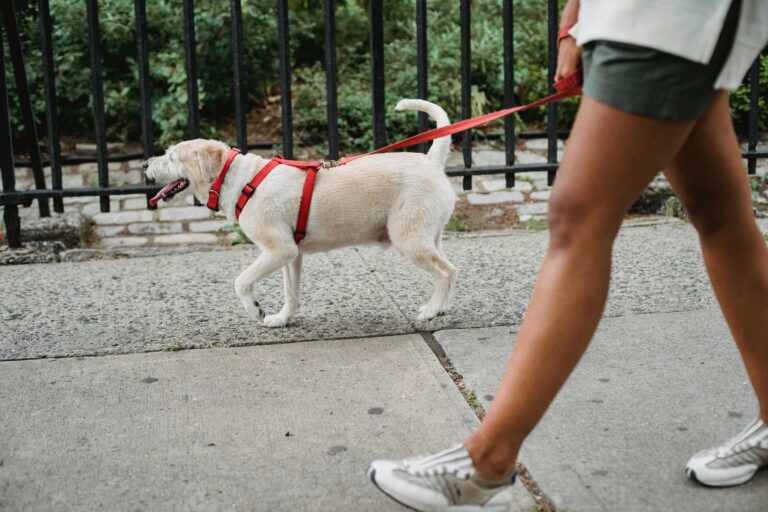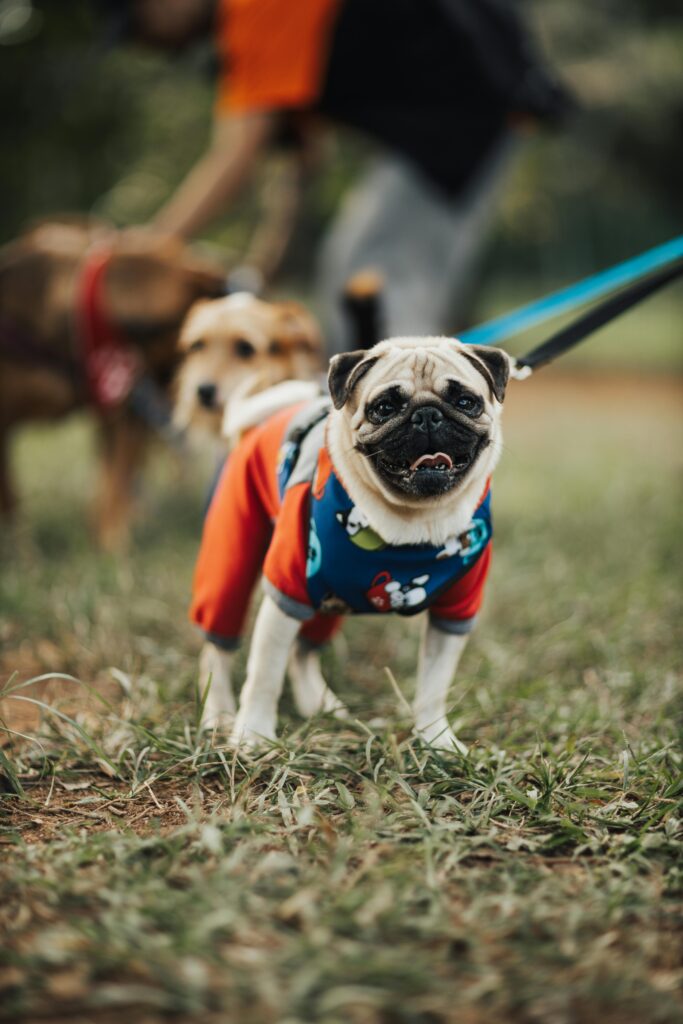Leash Reactivity Doesn’t Have to Last Forever
Many owners are embarrassed or frustrated when their dog barks, lunges, or growls while on leash. It can feel unpredictable and overwhelming. The truth is, leash reactivity is one of the most common behavior issues we see, and the good news is, it can be fixed with the right approach.
Reactivity is not the same as aggression. Most reactive dogs are simply frustrated, anxious, or overstimulated. Understanding the cause is the first step toward resolving it.
What Causes Leash Reactivity?
There isn’t a single cause. Instead, leash reactivity usually comes from a combination of factors.
Common causes include:
- Frustration: Your dog wants to greet another dog or person but can’t.
- Anxiety: Lack of socialization or past negative experiences trigger fear.
- Barrier frustration: The leash restricts movement, creating tension.
- Overstimulation: Busy environments with multiple distractions overwhelm your dog.
- Owner tension: Pulling back on the leash or showing nervous energy feeds the cycle.
Debunking the Myths About Leash Reactivity
There are many misconceptions about leash reactivity that often make things worse.
- Myth 1: A reactive dog is aggressive.
Reality: Most reactive dogs are not dangerous. They’re overwhelmed or frustrated. - Myth 2: They just need more exposure.
Reality: Throwing your dog into chaotic situations without guidance can increase reactivity. - Myth 3: Stronger equipment will solve it.
Reality: No harness or collar alone will fix reactivity. Training is the solution. - Myth 4: It’s something they’ll grow out of.
Reality: Without consistent training, reactivity usually gets worse over time.
Fixing Leash Reactivity: Proven Strategies
The goal is to teach your dog to stay calm and focused, even when faced with triggers.
Step 1: Build Reliable Obedience
Commands like “heel,” “sit,” and “look” give your dog structure when distractions appear. This prevents them from rehearsing reactive behavior.
Step 2: Create Distance First
Don’t start by walking directly into the trigger. Begin at a distance where your dog notices but does not react, then reward calm focus. Gradually reduce the distance as your dog improves.
Step 3: Reinforce Calm Behavior
Use treats, praise, or toys to reward your dog for checking in with you instead of reacting. Calm responses should always be celebrated.
Step 4: Control the Environment
Practice in progressively busier areas. Start small, then work toward crowded sidewalks or parks.
For additional techniques, see our blog on The Fastest Way to Improve Your Dog’s Behavior at Home. It highlights how structure is the backbone of reducing problem behaviors like reactivity.
When to Get Professional Help
Leash reactivity can be stressful, especially if your dog is large or strong. If your attempts aren’t working, don’t wait until the behavior escalates. Our Aggressive Dog Training program is designed to address leash reactivity, fear, and other challenging behaviors. With the right approach, even highly reactive dogs can learn to stay calm and focused.
For more insight, check out this helpful AKC article on reactivity vs. aggression. It explains the difference and reinforces why reactivity is often misunderstood.
Checklist Review: Keys to Reducing Leash Reactivity
- Understand your dog’s triggers and threshold
- Build a foundation with obedience commands
- Start at a distance, then close the gap slowly
- Reward calm behavior instead of reactions
- Avoid myths like “they’ll grow out of it”
- Seek professional help if progress stalls
Final Thoughts
With patience, structure, and proper training, leash reactivity can be resolved. Your walks don’t have to be stressful. Instead, they can become enjoyable bonding experiences where your dog learns to focus on you, not their triggers.
If you’re ready to transform your walks, we can help.


